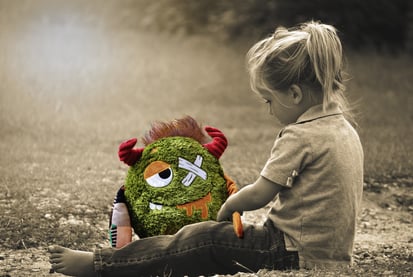Many of us might have emerged from the nationwide lockdown earlier this year having learnt a new thing or two about ourselves. As it was, spending so long indoors was a learning experience of its own, complete with highs and lows like any emotional roller coaster.
However, this hasn’t been an isolated phenomenon pertaining to adults only. Children and teenagers were also exposed to visions of the world and potential realities they had never before considered. This being the case, they may still be feeling some residual emotion that would be best discussed out in the open. To explore these new feelings properly, they may benefit from deepening their emotional vocabulary to include new sentiments beyond happy, sad, scared and angry. Giving more colour to the words used to describe our emotions makes it much easier to accurately share our feelings.

Practice Talking About Your Own Feelings More Openly
It is natural for parents to want to shield children from certain emotions. However, never seeing adults displaying difficult emotions can make children feel self-conscious when doing so. In response, they might internalise their feelings, which does not erase them but prevents any constructive discussion taking place.
Every Feeling is Okay
In the same vein, try not to demonise any emotions, as this will discourage children from sharing their feelings with you. All emotions are natural and a response to something happening in life. The easier they are to talk about, the less they are allowed to dominate our consciousness. Being able to talk about frustration, anxiety, anger, etc. means having an outlet to safely release it.

Be Relatable
Whenever possible, let children know that you relate to how they’re feeling. If they’re scared about a test, relate it to a time you were nervous about work. If you can, point out the positives that came of it, no matter how small or large. This might prompt your child to take personal and emotional conversations further, encouraged by your own willingness to show vulnerability.
Accept Not Talking
As confinement has taught us, humans are actually highly sociable creatures. However, it is also very human to not want to talk sometimes. It doesn’t last forever and when we’re ready, we open up. When this happens with your child, don’t worry. Give them some time and let them know you’re ready when they are, or try again a while later. At times, it feels too soon to talk about an event until it’s been processed, at which point we are able to speak about it more constructively.

Encourage Positive Emotions
Although the world can feel tough at times, it is also a place where exhilarating, amazing and wonderful things happen. Make sure to acknowledge good and happy emotions too. It’s something we often forget to do but which can be so powerful and good for mental health! Don’t be embarrassed or afraid to share your joy, it’s the one contagious thing we can all benefit from.
Katie Harwood


.png)










